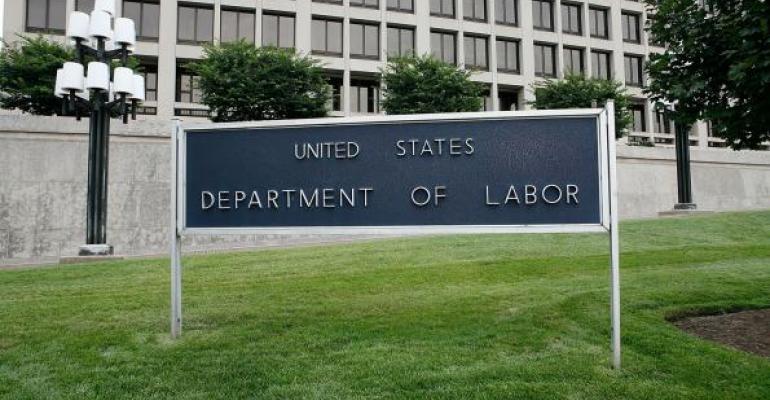The Department of Labor’s (DOL) fiduciary rule dominated headlines in 2016, but it wasn’t the only change affecting the retirement plan business. Wealth Management asked several industry leaders: “What do you view as the key developments that affected plan consultants in 2016?”
David Eikenberg
Head of Retirement, U.S. Intermediaries
T. Rowe Price
Baltimore, Maryland
Fee pressure/litigation fear: In 2016, there continued to be pressure on fees and an uptick in lawsuits against plan fiduciaries causing plan advisors to:
- Further increase due diligence/benchmarking to validate the provider and investment choices;
- Consider passive investments in an environment where fee concerns are top of mind for plan sponsors;
- Provide transparency of all plan fees, which includes utilizing zero revenue share classes and collective trust vehicles.
Shift to passive: The increased use of passive investments within plan lineups accelerated in 2016, specifically within target date funds. This is largely due to fee compression, fiduciary concerns and a strong equity market that has been a tailwind for index investing. While many advisors and plan consultants continue to believe in the case for active management, some are unwilling to go against the trend. We think it’s important that advisors and sponsors not base their investment choices solely on fees, but ensure they are receiving the appropriate value for those fees. Low fees do not necessarily equate to investment value.
Advisor consolidation: Many larger advisor teams, who previously evaluated potential acquisitions, took action in 2016. The DOL Fiduciary Rule accelerated this trend, especially for those plan advisors close to retirement. We also saw an uptick in plan consultants merging or partnering with health care consulting teams, creating a strong referral source in which both sides can approach prospects jointly to offer “holistic benefit consulting.” It is vital for consultants to build an integrated benefit offering and understanding of how changes to one affect the other.
David Hyman, CFA
U.S. Head of Wealth Management
Mercer
New York, New York
Overall, we’ve seen an environment that continues to shift to a retirement outcome approach with a more institutional feel. The DOL rule has certainly had an impact in accelerating the trend to this model, but large plan sponsors have been thinking about many of these same issues for years. The managed accounts trend has had significant pickup through an increase in robo advice providers in the retail world. We’re also seeing more opportunities for delegated implementation within small-to-mid size defined contribution plans, as plan sponsors seek assistance in meeting their fiduciary responsibilities. Finally, the Retirement Enhancement and Savings Act of 2016 has provided plan sponsors a safe-harbor in selecting annuity providers and mandated that sponsors provide participants with an estimate of annuity income based on their plan balances. These trends were all in place at the beginning of 2016, but the DOL rule has quickened the pace and opened up more opportunities for small-to-mid size plans.
Joel Lieb
Director of Defined Contribution
SEI Institutional Advisory Team
Oaks, Pennsylvania
The ongoing deluge of fiduciary and excessive fee lawsuits continued to influence the retirement marketplace. Consequently, plan sponsors continue to look for fiduciary support in the form of a discretionary investment manager to take over the investment selection and oversight process.
Participant education and financial wellness were top priorities for plan sponsors in 2016, as plan sponsors acknowledged many of their participants had insufficient retirement income balances. The opportunity for plan consultants was to educate the plan sponsors on the best approach to implement comprehensive wellness programs with an emphasis on participant education, plan design and optimal investment lineups. The goal is to put as many participants as possible on the best path to accumulating enough income to retire at the IRS normal retirement age (NRA).
David Ray
Senior Managing Director
Head of Institutional Retirement Sales
TIAA
Dallas, Texas
Perhaps the biggest development that affected consultants in 2016 was the shift from accumulation of assets to retirement readiness and outcomes. It is no longer good enough for a consultant to focus solely on fiduciary process. With the demographic shift in America leading to 10,000 baby boomers retiring every day for the foreseeable future, consultants must help answer the question, “Are employees financially and emotionally ready to retire?” According to our 2016 Lifetime Income Survey, people want lifetime income options—in fact, almost half (49 percent) of those surveyed say that their retirement plan’s No. 1 goal should be providing guaranteed monthly income in retirement—but 41 percent are unsure if their current plan offers that option. Plan sponsors are in a unique position to help ensure that employees have access to and understand their provision options for lifetime income, and plan consultants have to play a significant role in helping them evaluate available options and strategies.





